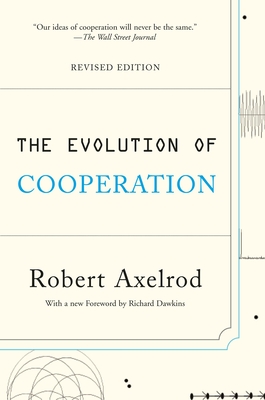The Evolution of Cooperation
Robert Axelrod

An interesting analysis and interpretation of the computerized Prisoner’s Dilemma tournaments that Axelrod held some 30 years ago. These were the tournaments in which “TIT FOR TAT” was shown to be an extraordinarily successful and robust strategy in the iterated PD. I read this because I read an article about it for one of my classes, which sparked my interest. There was a bit more interesting material in the book than in the article (by Doug Hofstadter), but not a great deal more. The book is almost 200 pages and I think it could cover the interesting material in 100 or 150–in particular the conclusion is quite repetitive.
Interesting takeaways include:
-A lone “nice” strategy cannot gain a foothold in an established environment of “mean” strategies, but even a very small cluster of nice strategies can do so as long as they are moderately more than proportionally likely to interact with one another. Asymmetrically, neither a lone mean strategy nor a colony thereof can successfully “invade” an established environment of cooperators.
-TFT won both of Axelrod’s tournaments despite the fact that, in any string of encounters with a single counterparty, it is mathematically impossible for TFT to achieve a better score. This seems to me an extraordinary fact, and is still somewhat difficult for me to grasp intuitively. I think my encounter with this fact illustrates to me how deeply ingrained the concept of zero-sum games (which the PD is not) is in, at least my own mind, and I think in our culture generally.
-The section on the “hot truce” between opposing trench battalions in WWI was extremely interesting, both as a valid application of Axelrod’s findings on cooperation, and in the depiction of the principal-agent problems between central command and trench battalions.
I found the “applications” to biology somewhat less compelling, though that may be more due to my own interests than to the writing itself.